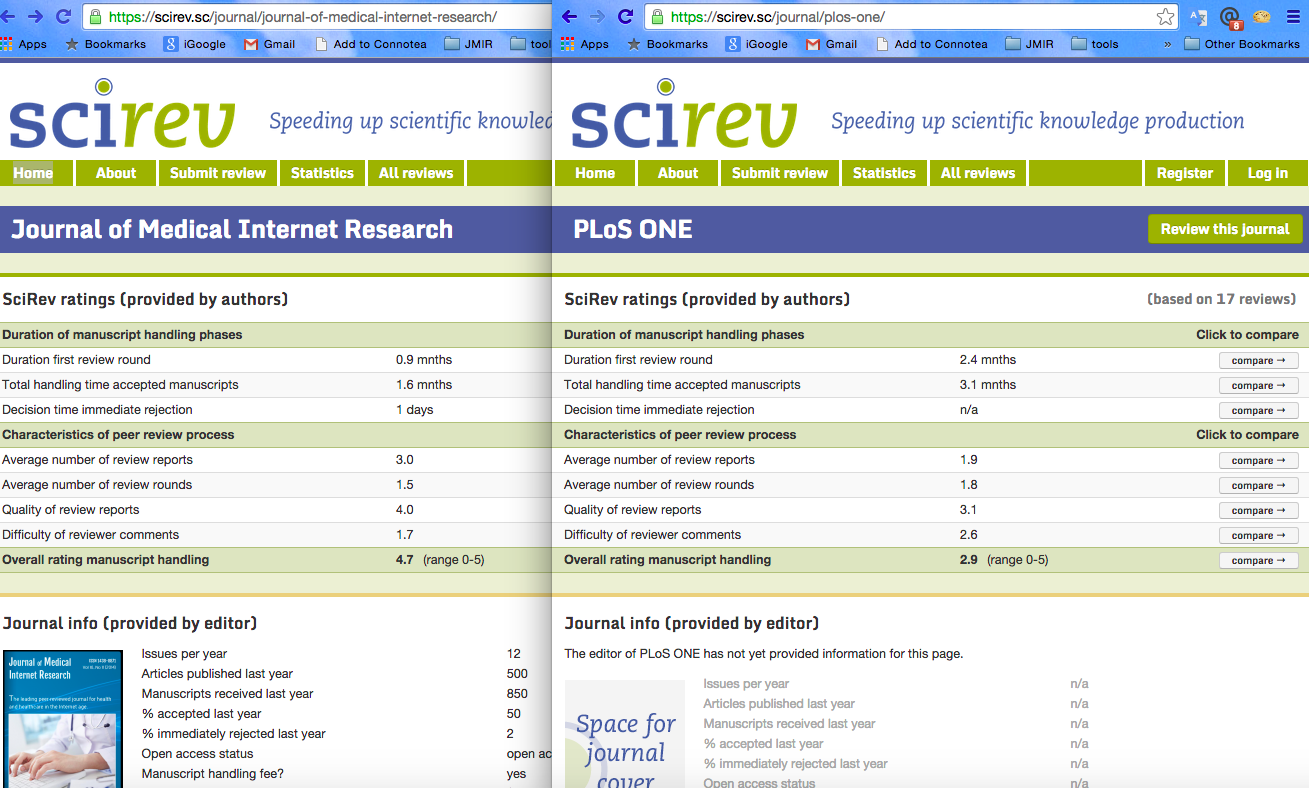(Toronto/Philadelphia, Jun 2015) Thomson Reuters has published the Journal Citation Reports (JCR) with its Journal Impact Factors for 2014. The Journal Impact Factor 2014 is defined as the number of citations in 2014 to the citations to articles published in the previous 2 years (2012-2013), divided by the number of articles published during that time. The Journal Impact Factor is a metric of excellence for a journal, it is not an article-level metric.
The Impact Factor is an increasingly controversial metric due its frequent misuse, e.g. administrators comparing the "raw" impact factor score across disciplines. This disadvantages journals in smaller disciplines such as medical informatics, which traditionally have less citations than for example multidisciplinary or general medicine journals. As one innovation, Thomson Reuters is now ranking journals by quartile (Q1, Q2, Q3, Q4), within their discipline.
While we at JMIR discourage obsession over the journal impact factor (in particular if abused as proxy to assess the quality of individual articles), our ranking in the JCR is an important validation that even as small open access publisher we can compete with journals published by publishing giants.
JMIR continues to be ranked in the first quartile (Q1) in both of it's disciplines, medical informatics (Q1) and health services research (Q1).
However, even these category-specific rankings are sometimes questionable, in particular for multidisciplinary journals such as JMIR which fit into more than the categories selected by the JCR editors. Moreover, the current JCR categories sometimes lump together journals which do not belong together, for example statistics journals are part of the medical informatics category, and oddly enough, the journal Statistical Methods in Medical Research is now suddenly the top-ranked journal in the medical informatics category.
It may therefore make more sense to compare JMIR against other leading multidisciplinary open access journals, as shown below. However, once again, the impact factor should not be the only determining factor when submitting an article. The journal scope and audience (who reads the journal) are equally important if one wants to maximize impact and influence of an article on key stakeholders and researchers, which is not measurable by citations (perhaps better measured with social media uptake and altmetrics).
We continue to encourage our authors to consider the full range of JMIR journals when submitting an article and consider the scope of the journal and the topic of the article.
Quiz: Which of the following #openaccess journals has the highest impact factor:
1) PloS One,
2) PeerJ,
3) BMC MDM,
4) BMJ Open,
5) JMIR
(scroll down for the answer)
| Journal | Quartile (in their category) | Impact Factor 2014 |
| 1. JMIR | Q1, Q1 | 3.428 |
| 2. PloS One | Q1 | 3.234 |
| 3. BMJ Open | Q2 | 2.271 |
| 4. PeerJ | Q1 | 2.112 |
| 5. BMC Med Inform Med Dec Mk | Q2 | 1.830 |
Beyond the Journal Impact Factor
Authors care (and should care) about other metrics/ratings such as author satisfaction with reviews and turnaround times, as for example evaluated by SciRev. JMIR is ranked highly here as well (compare for example against PlosOne ratings).

Other metrics to look at are the twimpact factor (social media impact) as well as post-publication dissemination activies by the publisher (JMIR is using TrendMD to promote published articles across other publishers such as BMJ and the JAMA network).